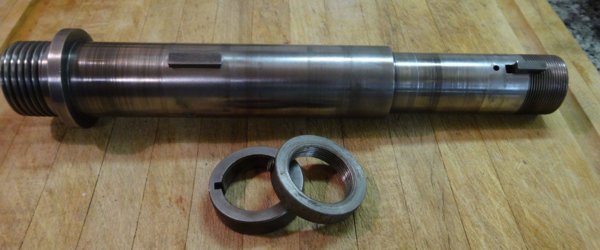- Joined
- Nov 8, 2013
- Messages
- 21
Another thought is the material thickness of the spindle is what it is and is in a stress relieved natural state so to speak.
Side stepping...Just out of high school we worked at an engine machine shop straightening crank shafts and cam shafts and tools used were chisel and hammer to change surface stresses to cause shaft to "bend" in the direction needed.
Back to point. ..drilling or reaming the I'd of the spindle MAY cause internal material stresses in the graining of the steel resulting in bending of the shaft which would cause wobble at the chuck ruining the spindle.
These small "hobby" lathes get good money due to small size and easy to move weight.
Clean up the old one and sell it then look for a suitable lathe and upgrade...It is a disease....
Sent from my SAMSUNG-SGH-I337Z using Tapatalk
Just out of high school we worked at an engine machine shop straightening crank shafts and cam shafts and tools used were chisel and hammer to change surface stresses to cause shaft to "bend" in the direction needed.
I too ran a crank grinding shop. I soon caught on to the stress riser created when you chisel smack a shaft in a filet (straightening it). Magnafluxing before and after proved the point, and worse, racing those straightened parts usually resulted in broken parts right where the chisel marks were.
Sent from my iPhone using Tapatalk


